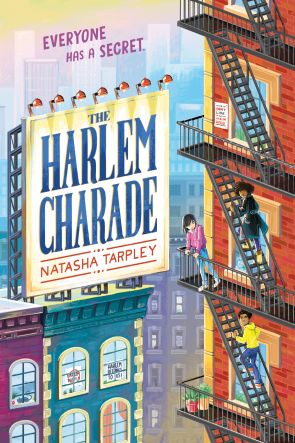 #WeHaveDiverseBooks: 5 Questions is a spotlight on OOM dedicated to exploring Scholastic’s amazing distinct voices. We’ll take a deep dive into the backgrounds, inspiration and works of these authors and illustrators.
#WeHaveDiverseBooks: 5 Questions is a spotlight on OOM dedicated to exploring Scholastic’s amazing distinct voices. We’ll take a deep dive into the backgrounds, inspiration and works of these authors and illustrators.
-----
Where does your inspiration to write come from?
Growing up as a shy, bookish kid on the south side of Chicago, I understood that stories were powerful; that they could shape beliefs and change the world. I learned this not only from the books that I read, but also from my mother, who wrote stories and created handmade books for me and my siblings that not only chronicled and celebrated our quirks and curiosities, but also expanded the range of images that we saw of African American children. Later, as a rebellious tween and teenager, stomping around in combat boots and ripped clothing, blasting punk music as loud as I could, I thought I’d outgrown my mother’s “little” stories, but in actuality, I needed them more than ever, because I rarely saw myself reflected in the books I read, or in the movies and television shows that I watched. I felt invisible.
In the spectrum of children’s literature, for example, Caucasian protagonists generally get to experience nearly endless story possibilities. Yet, when it comes to books that feature black children, the narratives often seem more restrictive. When I began writing for children, I made it my mission to tell stories for those kids, especially African American kids, who may also feel like their voices and experiences are overlooked.
Your middle grade mystery The Harlem Charade is full of adventure and intrigue. Tell us a little about the book, and what makes it special.
Set in contemporary Harlem, NYC, The Harlem Charade is a mystery in which three 7th grade protagonists,Alex, Jin, and Elvin must work together to solve an art-related mystery of Harlem’s past, in order to save their beloved neighborhood from the clutches of an ambitious politician who wants to turn Harlem into “Harlem World”, a ludicrous history-themed amusement park.
What makes this book special is that, in addition to solving a mystery, I wanted my characters and readers to think about what it means to live in a society where people have very different visions of community and progress, of the truth, of history and of the future. I also wanted to encourage readers to explore, to question, and to take an active role—even if it’s small—in making their own communities better.
You mentioned the main characters in The Harlem Charade: Jin, Alex, and Elvin. Tell us more about them. Why does it take all three of them to save their neighborhood?
Jin, Alex, and Elvin all have different personalities and come from different backgrounds, with their own views about and experiences in Harlem. Jin, who lives with her adoptive grandparents, is more observant, she is very comfortable watching the world from her special place behind the deli case in her grandparents’ store. Alex, on the other hand, is a doer. She’s an independent spirit with a strong sense of right and wrong. But her strong exterior conceals a hesitancy to open herself up, to trust that others will like her for who she is and not from where she comes from (a rich family). Elvin is kind of trying to figure stuff out. He’s worried about his sick mom, and is trying to make sense of the fact that he’s suddenly living in a strange city with a grandfather he never even met before.
To solve the mystery, the protagonists must make use of one another’s strengths. In the process, they force one another to step beyond their comfort zones, to grow as people. In addition, their differing viewpoints and backgrounds allow them to come up with better solutions than they would have alone. To me that’s what community building is all about: bringing multiple voices and experiences together to discuss and try to solve a problem.
Children’s literature has a great tradition of mysteries revolving around art. What do you hope this audience takes away from The Harlem Charade?
Art is an important tool that not only “reflects who we are and who we hope to be,” as Jin and Alex say toward the end of the book, it also allows us to shape the narrative, to tell the story that we want to tell about ourselves and our communities. This book was inspired by my witnessing the gentrification that was (and still is) happening in Harlem when I lived there several years ago. I wondered, as communities change, who remembers what was there before, and who shapes the stories that will be told about this place moving forward? I want my readers to think about how they want to shape their own narratives. What do they want people to know about their lives, about their neighborhoods? How do you use art or writing or music or other means to tell your story?
What would you like to say to any educators or students who pick up your book? What would you like them to know before they begin reading?
I always sign this book: “Happy Reading and Exploring”, because it is my hope that this story will be a springboard to many exciting adventures and discoveries in my readers’ own communities. And I know I sound like a broken record, but I really hope that readers will be inspired to question and get active in changing the things that they feel are not right in the places where they live. This includes changing the images and the stories that they feel do not accurately express who they are. Thank you for reading The Harlem Charade!





